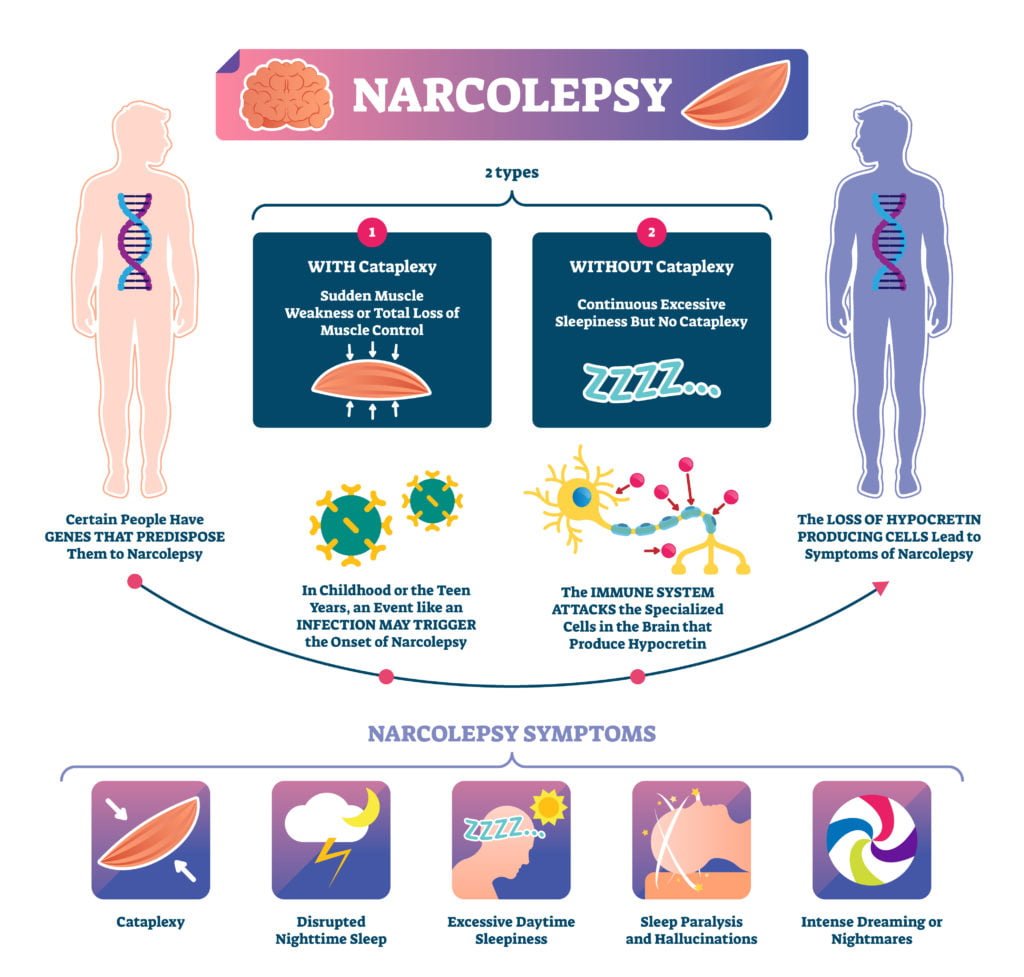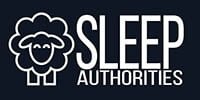Narcolepsy is a sleep disorder characterized by extreme daytime tiredness. It results in sleep episodes, where the affected person automatically falls asleep. A narcoleptic will usually reach REM sleep much quicker than a person without the condition. This is partly why they often fall asleep in spurts throughout the day. In some cases, narcoleptics can experience loss in muscle movement during waking hours.
The condition affects about 1 in 2,000 to 3,000 people, according to the National Sleep Foundation. Usually, people develop narcolepsy during childhood or adolescence but rarely receive a proper diagnosis until much later. [1]
Because narcolepsy makes people feel tired during the day, they often experience extreme wakefulness during the night. This makes it difficult to get on a normal sleep schedule. Productiveness at work or school can also become troublesome, as extreme daytime tiredness often results in the inability to stay focused or even remember important information.
Symptoms & Causes

Symptoms will range in severity between Type 1 Narcolepsy and Type 2 Narcolepsy, but there are some overlapping effects, which include:
- loss in muscle tone/muscle weakness (cataplexy)
- hallucinations
- falling asleep suddenly during daytime
- difficulty sleeping at night
- memory difficulties
- sleep paralysis
As far as the cause behind the disorder, most research concludes autoimmune disorders, a family history of the disorder and brain injuries to be the three main reasons. [2] Nonetheless,there is still a lot of research to be done before anyone can confirm who is most susceptible to narcolepsy.
Remember, if you think you may have a serious sleep problem, you should talk to your doctor about treatment.
The Two Types of Narcolepsy

When talking about narcolepsy, it’s crucial to know there are two different types: Type 1 and Type 2. The main distinguishing factor between the two is cataplexy, a condition characterized by the loss of muscle during waking hours. Cataplexy typically causes a person to lose movement, slur or even collapse. [3]
Type 1 Narcolepsy
Cataplexy is present in Type 1 Narcolepsy. A Type 1 diagnosis can confirm the patient has an irregular level of hypocretin, which ties into cataplexy. Hypocretin is the hormone in the brain responsible for regulating REM sleep and promoting wakefulness. Cataplexy symptoms include a sagging jaw, slurring words, and the loss of muscle control. Other narcolepsy symptoms, like daytime tiredness and insomnia, will still be present.
Type 2 Narcolepsy
People with Type 2 Narcolepsy do not display symptoms of cataplexy, and their hypocretin levels will be normal. Type 2 symptoms are usually less severe and align with typical narcolepsy symptoms, including daytime tiredness, hallucinations and trouble falling asleep at night.
Diagnosis of Narcolepsy

Talking to a medical professional about your sleep problems is the first step to recovery. Although narcolepsy doesn’t necessarily have a cure, a formal diagnosis can be the beginning of a healing journey for sufferers.
Testing
Final diagnosis will look very different for Type 1 and Type 2 , but the testing process will likely look the same. First, a doctor will perform an exam on the patient and recount any noteworthy symptoms that may relate to a sleep disorder. A Polysomnogram (PSG) is a sleep study that detects REM sleep patterns, which is incredibly helpful when diagnosing sleep disorders like narcolepsy.
One of the main components in a narcolepsy diagnosis is the lack of hypocretin, a brain hormone that regulates REM sleep and promotes wakefulness. If the patient lacks the hormone, he or she will likely be diagnosed with Type 2. Comparatively, Type 1 patients maintain healthy hypocretin levels in their systems.
In order to determine the presence of hypocretin—or lack thereof—doctors will perform a Multiple Sleep Latency Test (MSLT), which ultimately measures how long it takes a person to fall asleep and whether or not they can enter REM. During the test, the doctor can also measure the level of hypocretin present in the body, an important part in the diagnostic process. [4]
Once diagnosis is complete, your doctor will speak with you about treatment options, which include medication and therapy. If you believe you have a sleep disorder, you should seek medical help immediately.
Terms
- Narcolepsy: a sleep disorder that results in daytime tiredness and sudden bouts of falling asleep; symptoms include insomnia, hallucinations and cataplexy
- Narcolepsy Type 1: a type of narcolepsy that displays cataplexy
- Narcolepsy Type 2: a type of narcolepsy that does not display cataplexy
- Cataplexy: a sudden loss in muscle tone or a feeling of muscle weakness that is usually triggered by strong emotional expressions, including laughter, stress and fear
- Hypocretin: a brain hormone responsible for regulating REM sleep and promoting wakefulness
- Polysomnogram (PSG): a sleep study used in diagnosing sleep disorders that reveals the REM patterns of the patient.
- Multiple Sleep latency Test (MSLT): a test used in diagnosing sleep disorders that measures how long it takes a person to fall asleep and whether or not they experience REM sleep.
References
[1] National Sleep Foundation. 2019. How Common is Narcolepsy? Retrieved from https://www.sleepfoundation.org/narcolepsy/what-narcolepsy/how-common-narcolepsy
[2, 4] National Institute of Neurological Disorders and Stroke. 2019. Narcolepsy Fact Sheet. Retrieved from https://www.ninds.nih.gov/disorders/patient-caregiver-education/fact-sheets/narcolepsy-fact-sheet
[3] National Sleep Foundation. 2019. Are there Different Types of Narcolepsy? Retrieved from https://www.sleepfoundation.org/narcolepsy/what-narcolepsy/are-there-different-types-narcolepsy
Disclaimers
This article is for reference purposes only. It is not to replace or complement the advice of a licensed professional, nor is it intended to diagnose, treat, cure, or prevent any disease or condition. Any and all health concerns you have should be directed at a doctor.


